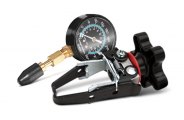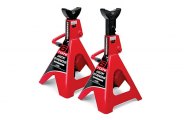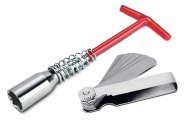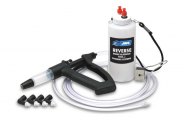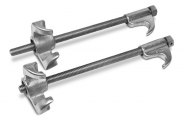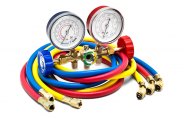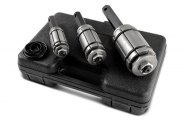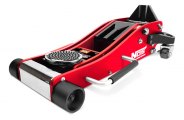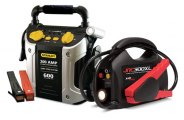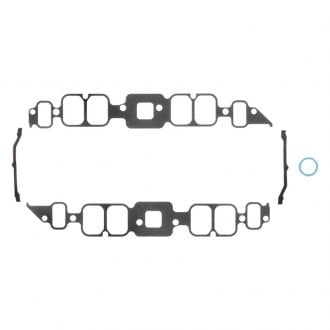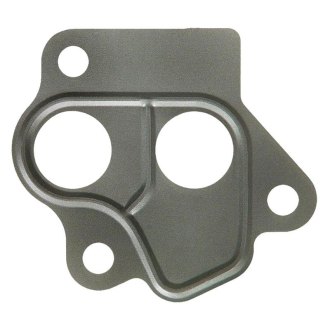Excalibur Accessories & Parts
Excalibur Parts
Universal Wheels & Tires
Excalibur Exterior Accessories
Excalibur Automotive Lighting
Excalibur Body Parts
Excalibur Interior Accessories
Universal Audio & Electronics
 Installation Parts
Installation Parts Stereos
Stereos Speakers
Speakers Amplifiers
Amplifiers Subwoofers
Subwoofers Cameras & Driver Safety
Cameras & Driver Safety Alarms & Remote Start
Alarms & Remote Start CB Radios & Components
CB Radios & Components Antennas & Components
Antennas & Components Mobile Phone Cables & Connectors
Mobile Phone Cables & Connectors Bluetooth
Bluetooth Equalizers & Processors
Equalizers & Processors Batteries & Power
Batteries & Power Video
Video Radar Detectors
Radar Detectors GPS Systems
GPS Systems Mounts & Chargers
Mounts & Chargers Action Cameras & Accessories
Action Cameras & Accessories
Excalibur Automotive Tools
 Engine Service Tools
Engine Service Tools Pullers & Installers
Pullers & Installers Lockout Kits
Lockout Kits Automotive Lifts & Stands
Automotive Lifts & Stands Repair Manuals
Repair Manuals Oil Change Tools
Oil Change Tools Spark Plug & Ignition Tools
Spark Plug & Ignition Tools Wheel & Tire Service Tools
Wheel & Tire Service Tools Brake Service Tools
Brake Service Tools Suspension & Steering Service Tools
Suspension & Steering Service Tools Fuel System Service
Fuel System Service Transmission & Drivetrain Service Tools
Transmission & Drivetrain Service Tools Cooling System Service Tools
Cooling System Service Tools A/C Tools & Equipment
A/C Tools & Equipment Electrical System Tools
Electrical System Tools Diagnostic & Testing Tools
Diagnostic & Testing Tools Exhaust System Service Tools
Exhaust System Service Tools Auto Glass Tools
Auto Glass Tools Jacks
Jacks Automotive Paint
Automotive Paint EV Charging
EV Charging Battery Chargers & Jump Starters
Battery Chargers & Jump Starters Dollies & Movers
Dollies & Movers Creepers
Creepers Auto Detailing
Auto Detailing Key Cutting Machines
Key Cutting Machines Dent Repair Tools
Dent Repair Tools Service Carts
Service Carts Vehicle & Parts Protection
Vehicle & Parts Protection
Many a car buff has been captivated by the appearance of a vintage car, only to become disenchanted with owning one once they spent time behind the wheel. Unfortunately those classic looks usually ride on running gear from the same era, which can deliver less than stellar performance, especially compared to the acceleration, braking, and handling that modern cars are capable of. The popularity of “restomods” – classic cars with late model engines, chassis, interior appointments and amenities – at collector car auctions shows that many collectors want the timeless looks of a classic, but don’t want to put up with subpar performance and conveniences. They want a car that’s great to look at, and fun to drive. However this formula, classic style coupled with modern performance and creature comforts, is nothing new: it was pioneered by Excalibur 50 years ago.
The Excalibur was originally conceived as a styling exercise to attract attention and get potential customers into the Studebaker stand at the 1963 New York auto show. Studebaker management asked noted designer Brooks Stevens, whose varied design portfolio included the Jeep Wagoneer, Harley-Davidson fenders, the Miller Brewing logo, as well as outboard motors and lawn mowers, to create something that was so eye-catching people wouldn’t be able to walk by without stopping. The vehicle that Stevens envisioned was described to Studebaker management as a “contemporary classic”. In the early 1950s he had created a 2-seat sports car with vintage styling elements called the Excalibur J, which was built on a Kaiser-Frazer Henry J chassis. Stevens had hoped that Kaiser-Frazer would put the car into production, but the company had already been stung by the failure of the Kaiser Darrin 2-seater, and shortly afterward exited the passenger car business. Stevens saw the Studebaker project as an opportunity to create another classically styled sports car.
He started with the best Studebaker running gear available at the time, a Lark Daytona convertible chassis that was fitted with a supercharged version of the company’s 289 cu. In. OHV V8 engine. The body he designed was inspired by the famous Mercedes-Benz SSK, the roadster that was designed by Ferdinand Porsche in the late 1920s before he left Mercedes to start his own company. The car was built in Milwaukee by Steven’s son Steve with the help of friends, and took 6 weeks to complete. The body was formed in aluminum and the engine was set back to improve weight distribution, which necessitated relocation of the steering and pedals. Some parts like the seats and gauges were off-the-shelf Studebaker components and modified as necessary, but pieces like the iconic flexible exhaust tubes came from the same company that had supplied them to Mercedes. The completed roadster wore Studebaker SS badges on each side of the hood and the radiator sported the same sword in circle emblem that had been worn by the Excalibur Js.
However, as the car was undergoing completion there was a management change at Studebaker and while the car was in transit to the show, the company decided they did not want to display it, since there were no plans for production. Stevens wanted to exhibit the car anyway, so show organizer Jerry Allen found a separate stand to display the car, where it became the smash hit of the event. The same positive reception at a subsequent show, coupled with rave reviews in the motoring press and a deluge of mail inquiries led Stevens to believe that if Studebaker wasn’t interested, he would build the car himself, so along with his sons Steve and David, he formed what eventually would be known as the Excalibur Auto Corporation.
All Excaliburs were meticulously hand assembled at a rate of approximately one per day, and the entire production run only totaled about 3200 cars. The first Series I cars, produced from 1965 to 1969, were similar to the show car, but a Chevrolet 300 hp 327 cu. in. OHV V8 engine replaced the Studebaker mill and the body panels were made from fiberglass instead of aluminum. In 1966 a Roadster with doors, longer fenders, and running boards and a 4-seat convertible called the Phaeton joined the original SS Roadster in the lineup. Engine options included a 350 hp 327 cu. in. Chevrolet OHV V8 and a Paxton supercharger that upped output to 435 hp, but with a curb weight of only 2100 lbs., the Excalibur delivered exceptional performance with any of the available power plants. An optional automatic transmission could be substituted for the standard 4-speed manual transmission. In total, 359 Series I Excaliburs were produced.
Although the Series II Excaliburs that debuted in 1970 looked very much like their forebears, they were much better appointed and more luxurious, which was reflected in significantly higher price tags. The new car, now only available in full-fendered Roadster or Phaeton trim, featured air conditioning, variable ratio power steering, power brakes, tilt wheel, leather seats, and AM/FM stereo. An all new ladder frame replaced the old Lark frame, increasing wheelbase by 2 inches, and the chassis included Corvette fully independent rear suspension components and 4-wheel disc brakes, positraction differential, rear air shocks and steel belted radials on chrome wire wheels. The 327 was replaced by Chevrolet’s latest 350 cu. in. V8, rated at 300 hp, while the GM-sourced Muncie 4-speed manual transmission remained standard equipment, with the Turbo-Hydramatic 3-speed automatic transmission optional. All the added equipment made the Series II Excalibur heavier, but it was still capable of 6 second 0-60 mph times and a top speed of 150 mph. Series II Excaliburs were assembled through 1974 with a total production of 342 cars.
In 1975 the chassis was revised again and beefed up with a central X-member, no doubt to handle the increased weight of the new Chevrolet 454 cu. in. engine that was now standard on the Excalibur Series III. Despite its size, like all V8s of the era, it was strangled by emissions control equipment and was rated at only 215 hp. Other changes to this series included a wheelbase lengthened to 112 in., larger and deeper fenders that provided greater coverage, and standard cruise control. With a total production figure of 1141, the Series III cars were assembled in greater numbers than any other Excaliburs, and in a trend that had begun with the previous Series II, far more Phaetons than Roadsters were produced.
1980 saw the greatest changes to the Excalibur since its inception, in both appearance and equipment. While the basic design was maintained, the chassis of the new Series IV was lengthened a whopping 13 inches for a 125 in. wheelbase, and with the radiator now positioned behind the front axle, and sleeker, more integrated styling, the car now resembled the Mercedes 500 and 540K instead of the SSK. The Series IV was the most luxurious and practical Excalibur yet, with power windows, power locks, power seats, power convertible top, AM/FM stereo/cassette player, and removable hard top. However, with a horsepower-challenged GM 305 cu. in. (5.0L) V8 now under the hood, all pretense of performance had disappeared and the Excalibur had evolved into a luxury cruiser. Nevertheless, a total of 995 Series IVs were produced, including 50 limited edition 2-tone white and gray models that were built to commemorate Excalibur’s 20th anniversary. The Phaeton body continued to be more popular than the Roadster.
In 1985 the Stevens brothers had great plans for the new Series V Excaliburs including the first fixed-head coupe, but the marketplace had other ideas. The big, heavy, underpowered Excaliburs were no longer that much fun to drive, yet had become extremely expensive, about $40,000 (approximately $90,000 in today’s dollars), and sales fell precipitously. In 1986 the company filed Chapter 11 and the assets were bought by the Acquisition Company of Wisconsin. Reorganized and under a new name, Excalibur Marketing Corporation, production of Roadsters and Phaetons resumed in 1987, this time powered by larger Chevrolet 350 cu. in. engines. The chassis was stretched yet again, this time to create a lavishly appointed Touring Sedan with a 144 in. wheelbase, and an even longer and more extravagant Grand Limousine was announced. However, more powerful engines and new models were not enough to gain the necessary sales and the company went bankrupt again in 1990. Series V production totaled 389 vehicles. Over the next several years there were several entities who purchased the company assets with grand plans for production only to end up in bankruptcy. For a time the company diversified, making everything from replica Shelby Cobras to motorcycle trailers and auto accessories.
If you like the classic automotive styling of the 1920s and 30s but don’t want to deal with the ancient mechanicals, so-so brakes, poor acceleration and handling, and questionable reliability that is common to cars from that era, then maybe an Excalibur is for you. The light weight combined with powerful engines on the early models delivered lively performance, and even though they were heavier and less powerful, the later Excaliburs were comfortable and luxurious cruisers. And because modern parts were used throughout they were much more dependable than an actual vintage car. Like most small, limited production builders, Excalibur used many parts sourced from the big OEs, and because those parts are also common to the OEs’ mass produced cars, most replacement parts are still available, many right here on our digital shelves. In addition to repair parts, you’ll also find a huge selection of maintenance supplies and appearance products to keep your Excalibur running well and looking its best.
Dress your vehicle up. Keep it running at its peak or unleash its hidden power. Make it look like it just rolled off the show room floor. Take care of it and maintain it. You name it, we've got it. We have gathered everything you need to make your Excalibur perfect both inside and out. CARiD's job is to meet your every expectation and provide you with quality and durable accessories and parts designed with excellence in mind. Whether you're after luxurious style, brisk performance, or anything in between, our wide assortment covers all the bases.
